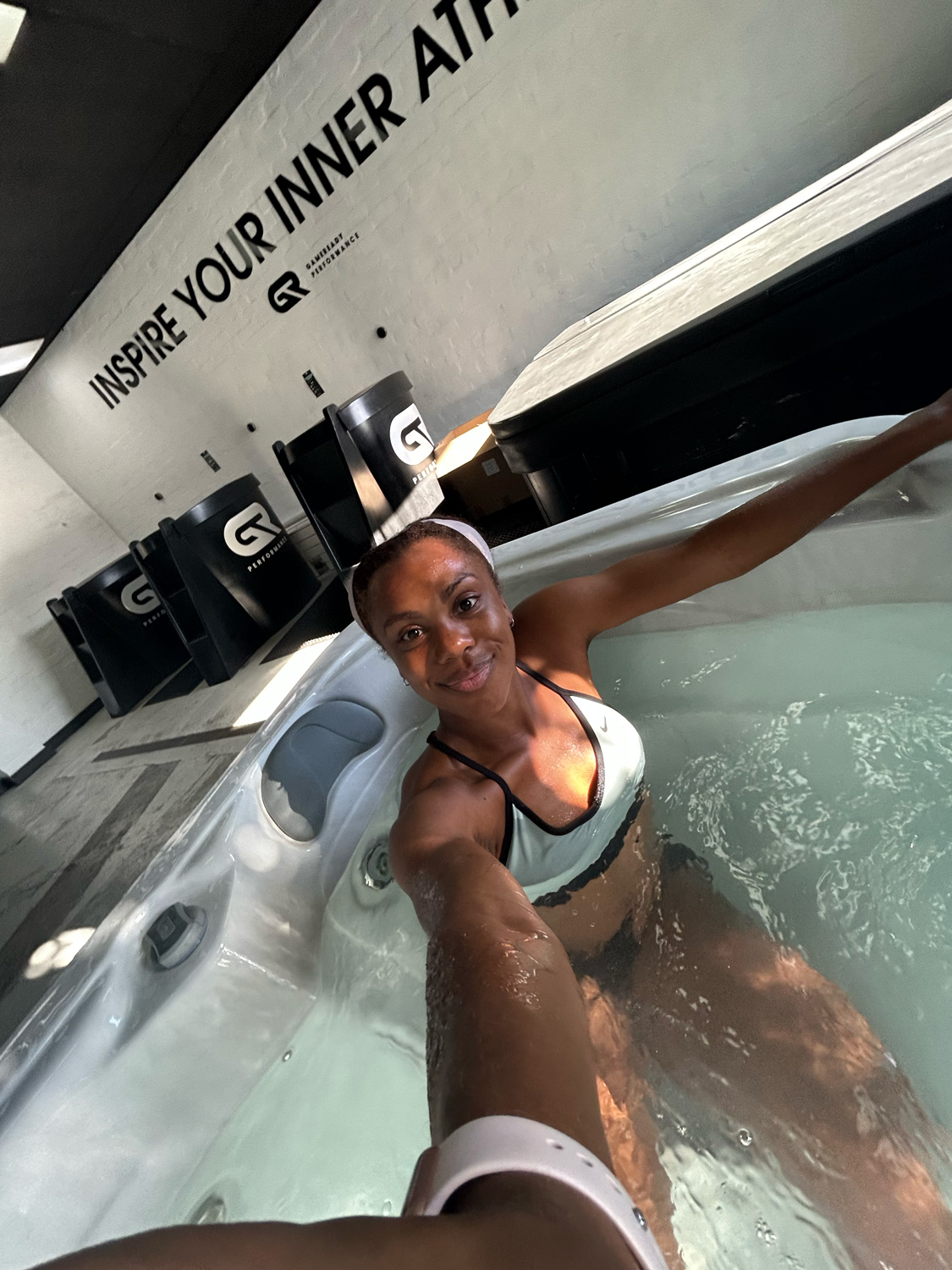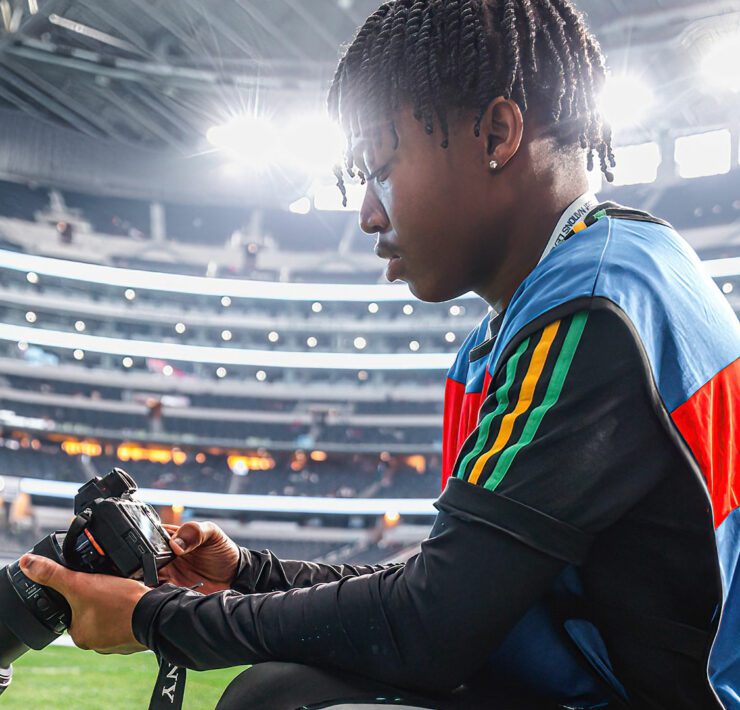Mariah is a professional soccer player for Adelaide United and…
For all of you who watched the College Football National Championship (Go Dawgs!), I want you to close your eyes and imagine you’re an American football player. Not the quarterback, but a running back. The guy who is tasked with evading gargantuan defenders and expected to get up after being crushed by them play after play. Now imagine how his body feels after a game. That’s how I feel after soccer matches.
I’m kidding. Football isn’t as hard on your body as American football. Generally after games, I have some combination of muscle tightness, soreness, and achy joints. But I have had a handful of games- each of which I remember vividly- where I was approaching running back status post-match. After my body had cooled down and the adrenaline had worn off, I could barely walk. Going up or down stairs? Forget about it. My knees were in intense pain due to cartilage damage that sometimes flares up. The crazy thing is, I’d go from debilitated to back in training in 36 hours.

How?
Recovery.
Recovery. Recovery. Recovery.
As an old professional athlete, I can’t overstate the role recovery plays in my performance and overall health and well-being. Over the past three years, after lots and lots of research and trial and error, I’ve developed a recovery regimen for my off days that has been a game-changer in my management of joint pain and muscle tightness, the biggest issues I face post-exercise. There are tons of recovery strategies on the internet that are touted as beneficial, but under scrutiny often lack the data to support their claims. (Pro tip: If there aren’t any sources, don’t believe it). My recovery strategies feature practices confirmed through research. If you want something that actually works, you’ve come to the right blog.
Mariah’s Top Evidence-Based Recovery Practices
- Aquatic Exercise
The biggest recovery tool for me, hands down, is the pool. Swelling is your body’s normal response to an injury, whether it’s something acute (like a turned ankle) or chronic (such as arthritis). Studies show that aquatic exercise decreases your body’s inflammatory response by slowing down the production of inflammatory proteins in your immune system called cytokines. If my knees are really sore I’ll just walk in the pool for 15-20 minutes on an off-day or after a hard session, if they aren’t as bad I’ll add in some dynamic movements. The main benefit of water exercise is the pressure exerted on your body, so depth does matter– a good rule of thumb is to go in chest-deep.
- Hot Tub
Growing up, all I heard in response to an injury was ice, ice, ice, but heat is our friend! I don’t think it’s utilized enough. Remember: heat relaxes. Heat increases blood flow, metabolism, and the elasticity of connective tissues in muscles (i.e. relaxes muscles). If your recovery goal is to alleviate tight muscles or stiff joints a warm pool or hot tub can work wonders due to the heat and water pressure. Studies also suggest that heat therapy post-exercise hastens recovery by enhancing factors involved in muscle repair.
- Sauna
Yes, even more heat! While the normal temperature for a hot tub sits between 97°F (36°C) and 104°F (40°C), saunas range from 140°F (60°C) to 212°F (100°C). Higher temperatures relax and widen blood vessels increasing blood flow. Improved blood flow allows blood to heal and repair damaged tissue and flush out waste metabolites in muscle tissue (things like lactic acid) quicker, speeding up post-exercise recovery time. Studies also suggest sauna bathing decreases acute and chronic inflammation by lowering C-reactive protein levels, a major biomarker of systemic inflammation.
FYI, the effects of saunas come from the heat– the type of heat doesn’t matter. Thus, the beneficial properties of sauna bathing can also be gained in infrared saunas. If you haven’t tried one, you definitely should!
- Sauna + Stretching
I like to optimize my sauna bathing by adding stretching. Muscle “tightness” is not clearly defined, but limited range of motion due to shortened muscle length is a principal component. While there is debate about the effectiveness of stretching, static stretching has been shown to increase range of motion. Pairing stretching with heat increases range of motion even more. Studies recommend static stretching for 10-30 seconds for 2-4 repetitions to increase flexibility. (What studies don’t recommend is static stretching before exercise. Static stretching immediately post-exercise has yet to be proven beneficial to recovery.)
- Hydration
With all this sweating going on we can’t forget about hydration! As you’ve certainly heard before, it is very important to replenish the fluids and nutrients your body lost during exercise. Muscle glycogen is the main fuel source used during prolonged aerobic exercise. Studies have indicated that poor post-exercise rehydration can decrease performance in subsequent exercise sessions due to impaired glycogen replacement in your muscles. On the flip side, proper fluid intake after exercise is vital to maximizing long-term performance.
Furthermore, adequate water intake helps keep joints well-lubricated. Water is the main component of synovial fluid, which lubricates and cushions joints and cartilage. A dehydrated body may struggle to create synovial fluid, which can lead to friction, pain, and inflammation in the joint.
. . .
For all my astute readers, you probably noticed a “Part 1” in the title. When I initially sat down to write this blog I had more than ten recovery recommendations– some backed by research and some more anecdotal. I gave you a lot of the heavy hitters today but I’ve got more nuggets to come. Stay tuned!
Mariah is a professional soccer player for Adelaide United and a freelance writer. She holds a B.A. from Stanford University and a M.S. from the Wake Forest School of Business.









